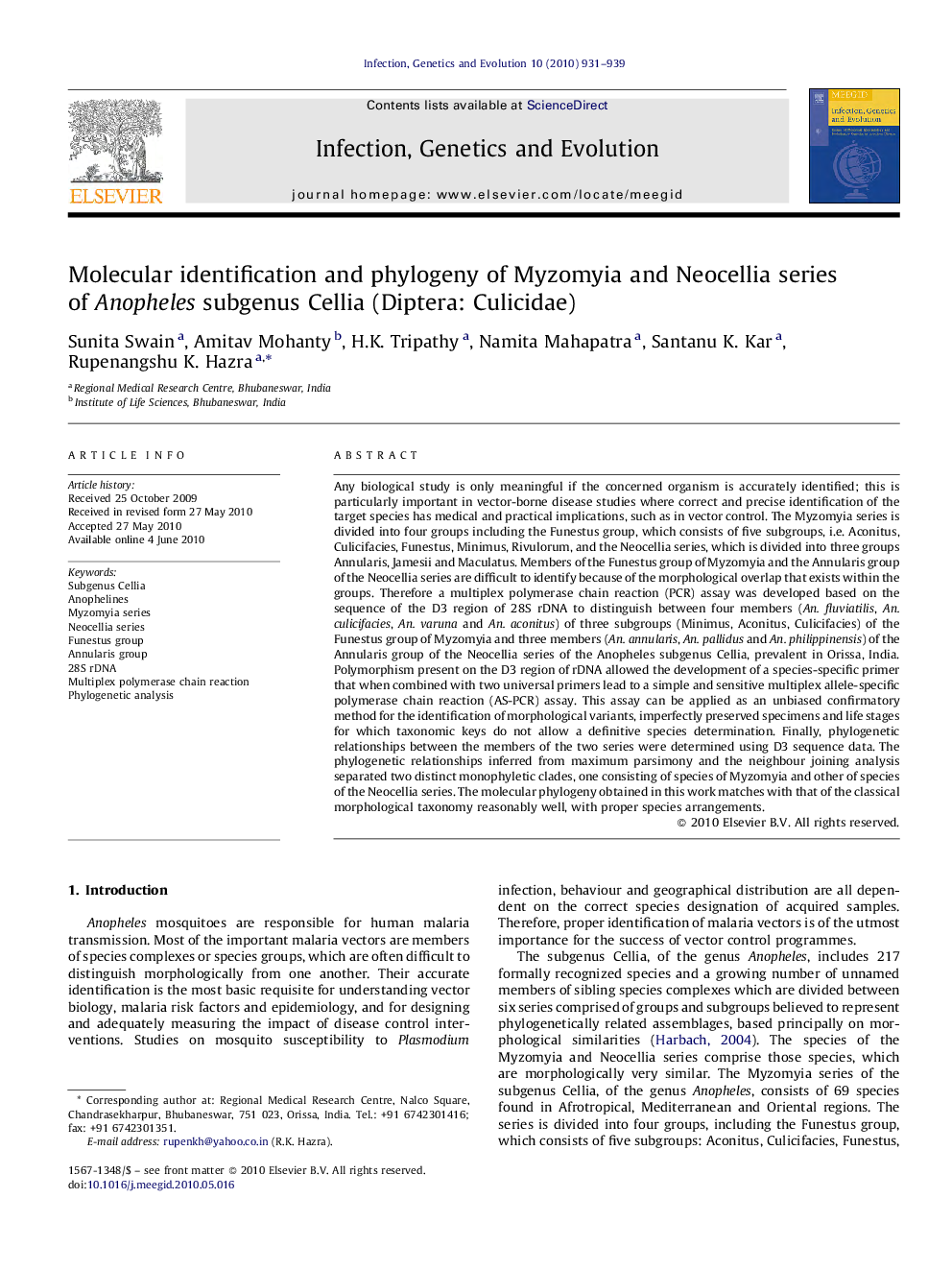| کد مقاله | کد نشریه | سال انتشار | مقاله انگلیسی | نسخه تمام متن |
|---|---|---|---|---|
| 2823200 | 1161377 | 2010 | 9 صفحه PDF | دانلود رایگان |

Any biological study is only meaningful if the concerned organism is accurately identified; this is particularly important in vector-borne disease studies where correct and precise identification of the target species has medical and practical implications, such as in vector control. The Myzomyia series is divided into four groups including the Funestus group, which consists of five subgroups, i.e. Aconitus, Culicifacies, Funestus, Minimus, Rivulorum, and the Neocellia series, which is divided into three groups Annularis, Jamesii and Maculatus. Members of the Funestus group of Myzomyia and the Annularis group of the Neocellia series are difficult to identify because of the morphological overlap that exists within the groups. Therefore a multiplex polymerase chain reaction (PCR) assay was developed based on the sequence of the D3 region of 28S rDNA to distinguish between four members (An. fluviatilis, An. culicifacies, An. varuna and An. aconitus) of three subgroups (Minimus, Aconitus, Culicifacies) of the Funestus group of Myzomyia and three members (An. annularis, An. pallidus and An. philippinensis) of the Annularis group of the Neocellia series of the Anopheles subgenus Cellia, prevalent in Orissa, India. Polymorphism present on the D3 region of rDNA allowed the development of a species-specific primer that when combined with two universal primers lead to a simple and sensitive multiplex allele-specific polymerase chain reaction (AS-PCR) assay. This assay can be applied as an unbiased confirmatory method for the identification of morphological variants, imperfectly preserved specimens and life stages for which taxonomic keys do not allow a definitive species determination. Finally, phylogenetic relationships between the members of the two series were determined using D3 sequence data. The phylogenetic relationships inferred from maximum parsimony and the neighbour joining analysis separated two distinct monophyletic clades, one consisting of species of Myzomyia and other of species of the Neocellia series. The molecular phylogeny obtained in this work matches with that of the classical morphological taxonomy reasonably well, with proper species arrangements.
Journal: Infection, Genetics and Evolution - Volume 10, Issue 7, October 2010, Pages 931–939